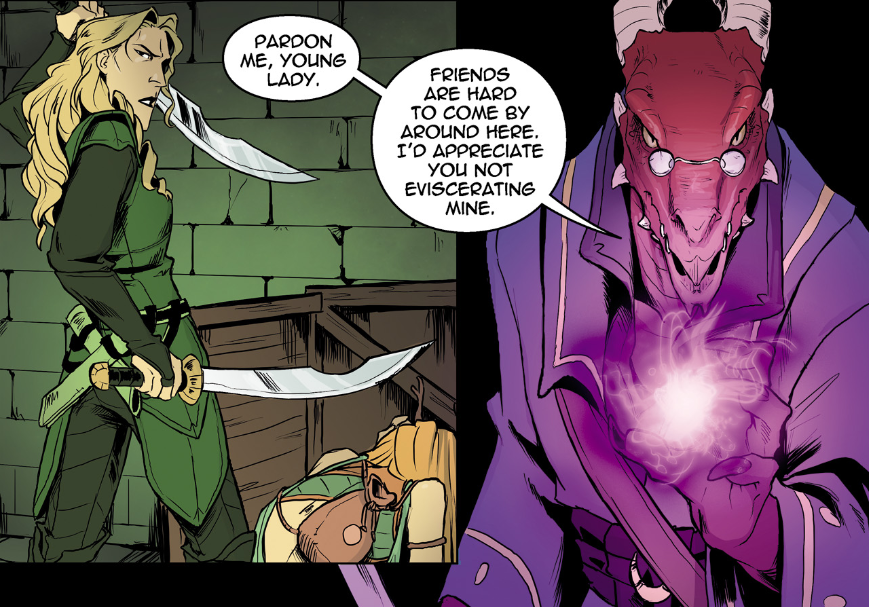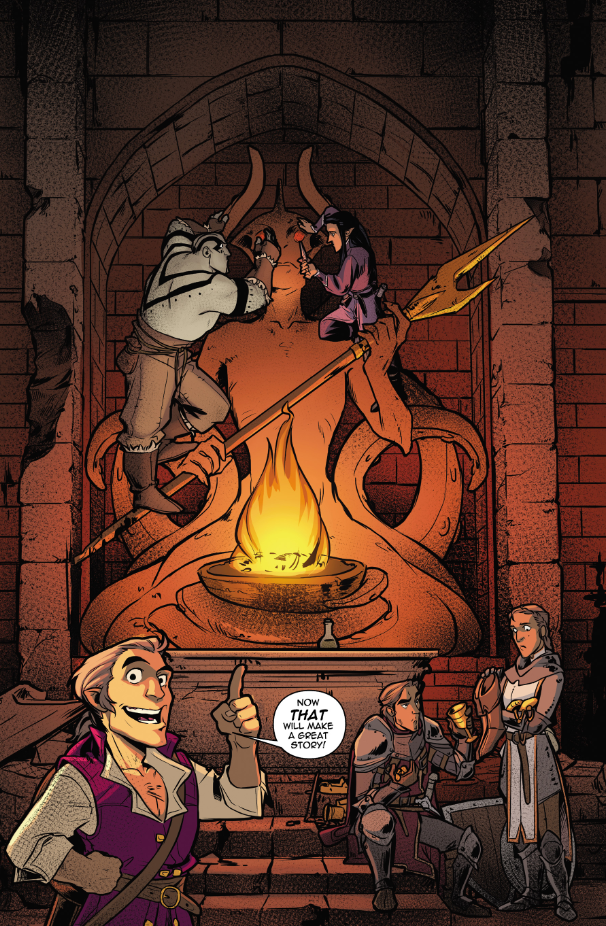An absolute must-read for all street mages and urban shamans who want to put some real occult into their magic roleplay.
Read Moreby Anna Urbanek
In this episode we go on deep dives into my favorite topics: occult and plants. And we’re being very critical of what we read. I don’t know why, but I happen to apply higher standard to occult books, maybe because it’s so easy for them to go into ‘woo’ territory if the authors don’t pay enough attention.
Read Moreby Anna Urbanek
Welcome to the new series of posts on the blog! Librarian’s Nook will cover the latest books read in my constant pursuit of knowledge. These books are all, in one way or another, research – either for the project at hand, for the books planned in the future, or for satiating my endless curiosity of the world. As many of them will be useful to other worldbuilders, I’ve figured I might as well share my notes. These not reviews; there won’t be any rating systems, and the main criterions will be usefulness and general enjoyment.
What can you expect in this series? A variety of books, mostly nonfiction, covering natural sciences, history, occult, and folklore, with a side dish of other topics if I find whatever I’m currently reading useful from a worldbuilding perspective. Fiction won’t feature too heavily – I rarely read it, and when I do, it’s mostly fairy tales, myths, and legends. The majority of books will be in English, with an occasional Polish title.
Read MoreYou see, I adore Arthur Rackham, I care deeply for Gustave Doré, I spent hours redrawing Aubrey Beardsley’s illustrations. But there’s one artist whose works I truly love. It’s Jan Marcin Szancer.
Read MoreAt least for a historian. Seriously, those guys will raid your garbage bin and steal your receipts. And the humanity will be grateful. After a while. I’ve just put my hands on the last (well, fourth out of five, they weren’t delivered in the right order) volume of History of Private Life. It’s probably one of the best series about history ever written, especially if you’re interested in social changes, not the fates of battles and wars. And if there’s some study area I’d love more than social and cultural history, I haven’t found it yet.
Read MoreI’m a bit behind on the reviews but… Oh my, this comic book is everything I’ve ever wanted (until the animated series comes out, and then the 10-season live action TV series).
Ending the last issue on a high note, with “roll initiative” in the air, Matt Colville decided to throw the characters under the bus. The villain is deadly, intelligent, and doesn’t care at all that the protagonists would very much like to loot her afterwards, thank you very much. I cannot wait to read more about her, and her compatriots.
The story progresses just like it should, seeing as we’re 66% into the story arc – there’s a party to be assembled, and the main characters must go through the hardships and tribulations to achieve their final goals in issue six. And yet, even though it’s classic story composition, it still feels natural and fresh. Vex is incredible and believable (she made such progress during the campaign!), Keyleth has the best facial expressions, and Scanlan is the most genre-savvy character I’ve seen in a long time.
But the story needs more Percy.
I’m going to leave you with my favourite snippet of this issue: Tiberius being awesome.
I got my latest Kickstarter package delivered – a pack of Common (or Garden) Gnomes from Midlam Miniatures. Why did I need them? No reason whatsoever. But I am a big fan of this tiny UK-based company and their metal minis, and I make it a point to support all their Kickstarter campaigns. They keep creating original, less “popular” designs, filling several niches: beastfolk, halflings, civilians, Lovecraftian cultists, female characters in sensible clothing.
The minis are standard 28mm scale, but being gnomes they’re only 28mm when you measure them up to the top of the pointy hat. Here’s the size comparison of the male and female gnomes with a human woman (from Midlam’s Winter Adventurers set):

I got absolutely zero need for those gnomes. Even if I get to play a gnome one day, they won’t be wearing pointy hats (unless they’re a wizard, I guess). But the minis are so sweet, well cast (little to no lines, no flashes, no rips, no miscasts) and detailed that they’re already on my painting short list.
As for gnomes they’re quite diverse – just another nice thing about Midlam’s minis. Out of 14 models in a set, there are four women (a mage, shown above, a flower girl, an unarmoured woman with an axe, and a leather-clad one with a sword), all of them in practical dresses (as far as practical dresses go). The other ten are male – or at least bearded, part of them armoured, part of them unarmoured, some with swords, some with axes, and some with wheelbarrows or angry gestures. The wizard has an owl familiar, so everything is good in the universe.
Anyway, guys from Midlam have just put a new Kickstarter campaign out there, with the Ghosts of Midlam Manor. If you ever need a dwarven or a halfling ghost, check them out.
It’s not that I’m forced to write about Critical Role all the time, but it somehow seems like the most enjoyable part of the RPG world these days. And they’ve just announced that the artbook will be available on 9 November, and the campaign’s over, and the comic book is just brilliant.
Second issue of the Origins comic book is available since today on Darkhorse and everywhere else where you can get digital comic books. I got mine this morning od Darkhorse’s website, and then spent several hours at work, not really being able to read it yet. Exercises in patience are a terrible thing, especially when you’re a proud owner of three-second patience window.
The book – again, 27 pages – takes us on a road parallel to the one travelled before. Namely, to the path of Scanlan Shorthalt and Grog Strongjaw (and the rest of their adventuring party), as they’re raiding and looting an ancient temple, somewhere in the swamp. That, quite cleverly, sets the characters on the road that will surely get them to Vax and Vex, as they’re clearly doing the same quest, just from another end. (Tiberius and Keyleth are heading in the same direction!)
Future Grand Poobah and Bard Extraordinaire are a part of an adventuring group, comprising them, a wizard named Vash, a knight and a cleric. A bunch of assholes, according to Scanlan. After clearing the shark-men temple and recovering relics, they get back to Stilben, and visit an alchemist shop (yes, the same as featured in issue one). An assassination attempt later (looks like Vax was right about that), they visit the tavern. The end.
Well, no. Surprisingly – one would expect a lot of action and shenanigans from the main duo – half of the issue is a series of social encounters. Intriguing? Yes. Entertaining? Yes. Tense, surprising and randomly changing directions? Definitely. It requires a talent to write the action scenes, but even greater to write – and draw! – long conversations in comics so they captivate the reader entirely. Here’s the thing: a big round of applause for Olivia Samson for drawing the seemingly static, repetitive panels with talking characters with such intelligent, subtle twist, that I haven’t even noticed them in the first read.
Scanlan’s chat with Tiberius takes up four pages, and almost all of the panels look like this:

Just half of a goliath, a gnome and a dragonborn by the bar, chatting, barely moving. And then you’ve got the bartender, who basically goes through all stages of grief in the background. It’s easy to miss when you concentrate on the dialogue (sparkling!), and the scene has a very cinematographic feel of a one, long take with almost no cuts whatsoever, but the stillness and repetitiveness basically forces your mind to look for the details that make the images different. And boy, they are delightful.
The second issue is great. As the first one was based on action and investigation, this one is calmer; combat encounters are quick and deadly, and character interactions take up much more space. Maybe because the twins were quite in sync, maybe because it’s sort of expected when the main character is a charismatic gnomish minstrel.
In any case,

















